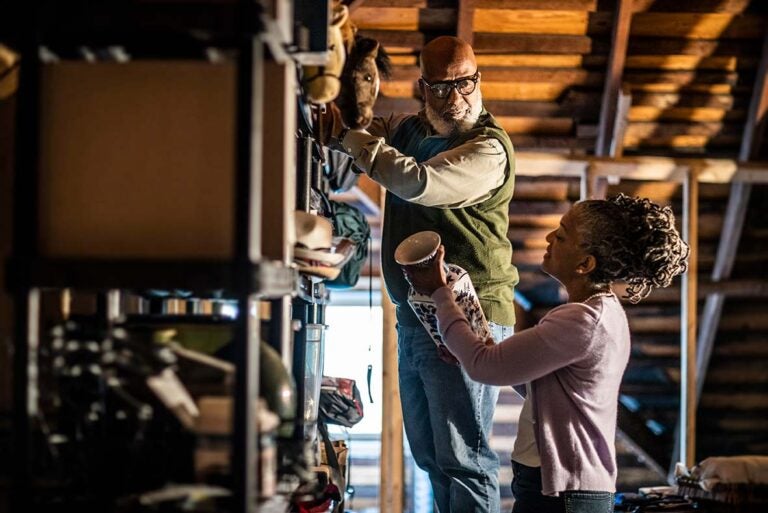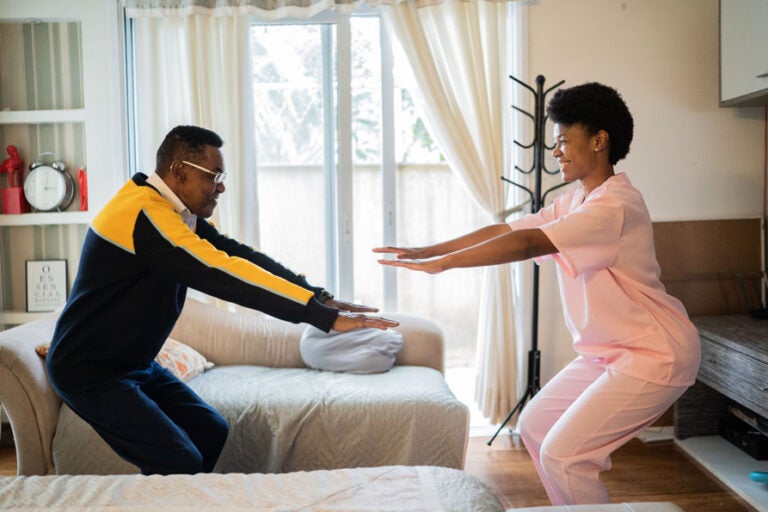Whether you’ve just retired and want to make a fresh start or are feeling the crush of a house full of memories, clearing your space can offer a host of physical and mental benefits. But no matter how appealing a clear space may be, after a lifetime of accumulating memories and heirlooms, parting with your things can be sweet sorrow. These decluttering tips for retirees offer strategic ways to make tough decisions easier.
Get the Biggest Job Out of the Way
When tackling a home that holds lifetimes of memories, the sheer volume of items can be overwhelming—not to mention the strength of your emotional attachment to many of them. When looking for a place to start, it’s often a good idea to jump into the most difficult or stressful task—think larger projects like the attic, garage, or master bedroom closet. Once your biggest job is complete, it’s easier to envision how the rest of the house will go, and you’ll have dealt with a large piece of your home.
If you think it’s really too much to manage on your own, a senior move manager can help with the process, especially if the size of the project or the amount of household items is overwhelming. “Senior move managers will work at your pace to start decluttering,” says Jake Knight, owner of My Move Project in Sacramento, Calif., which helps people declutter and organize. “We are trained in helping you get through the process as easily as possible. Plus, it helps to have someone who’s not a family member guiding you without being pushy or dismissive.”
Honor Your Feelings, Accept the Realities of the Task
It’s rarely easy to part with items that trigger stories and memories. Gari Julius Weilbacher, M.Ed., INHC, a life coach in Philadelphia, focuses on helping clients declutter first by lending a friendly ear. She provides compassionate clutter control and says the process often surfaces memories, making empathy essential to helping someone declutter.
Because it won’t be possible to clear your space and keep everything, acceptance is a large part of the transition. Ben Soreff, a professional organizer at House to Home Organizing in Hartford, Conn., says he’s had clients with multi-generational items in their homes who were resistant to parting with anything. As a part of your process, you may need to accept that you can’t be responsible for preserving so much stuff.
One way to approach the emotions tied up with sentimental items is to reevaluate how they make you feel. Do they really tug at your heartstrings, or do you just think they are supposed to? It can be easy to keep a lot of useless stuff in the name of emotion.
After making peace with your feelings, the next step is to start sorting. Soroff suggests basing your decisions on how often you use the item, how hard it is to get again, and how expensive it will be to replace. As you decide, categorize by toss, sell, or give away. Consolidating items in this way helps get rid of them in bulk and speeds the process.
Make Memories Last With Photos
Sometimes a photo of a cherished item can be just as moving as the thing itself. Taking pictures helps you keep memories without keeping stuff. According to Knight, archiving sites such as artifcts or pinventory offer a good way to store digital memories after parting with the physical item.
Tralee Johnson, a licensed marriage and family therapist in Oakland, Calif., couldn’t bring herself to get rid of the baby shoes her mother had so carefully preserved and stewarded through her life. But the shoes and other cherished items were taking up needed space. Johnson found a solution in photographing items, like the shoes, that carried special meaning for her. She’s been able to let go of the physical objects, and the photos allow her to connect with memories and feelings they evoked. “Now I have a picture whenever I want to think about Mom,” she says.
Donate Rather Than Trash
Another technique for parting with treasured items is to find new homes for them. “It is much easier for people to part with things if they know they will be reused and not trashed or landfilled,” says Weilbacher. “I have done whole home renovations and moves where every single thing found a new home.”
While it’s a nice thought, finding a new home for every item can be time-consuming and overwhelming in its own right. Some things may be worth finding a buyer for, but the monetary value doesn’t merit the effort for the vast majority of sentimental attachments. Giving things away to people who want them can be a win-win solution.
Wondering where to start? Buy Nothing groups operate in an ask-for-what-you need, give-what-you-can paradigm, which can help you find new homes for your belongings locally. Often people will even come to you to pick up items you’ve offered that they want or need. The Buy Nothing Project can connect you with a group in your area.
Getting rid of excess belongings—or decumulating—can be an emotional process, but you can make it manageable by strategizing an overall approach, then setting small goals. Take one room or space at a time, and don’t be afraid to ask for help from a professional or family member you trust. Though parting with your treasures is bittersweet, remember you’re doing it for your own happiness. Throughout the process, Keep your eyes on the end result, a lovely decluttered space where you can safely enjoy your life.
Seniority is published by Finance of America Reverse LLC. The views expressed in this publication are those of the author alone and do not necessarily reflect the views and opinions of Finance of America Companies. This article is intended for general informational and educational purposes only and should not be construed as financial or tax advice. For more information about whether a reverse mortgage may be right for you, you should consult an independent financial advisor. For tax advice, please consult a tax professional.




